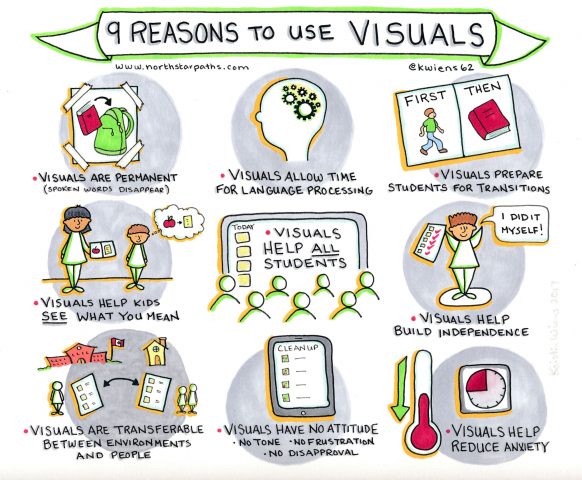Visual aids refer to the use of pictures, photographs, gestures, drawings, written words, or other objects to facilitate communication for a student who has difficulty using or understanding language. They help enable communication between a student and his or her communication partners. In addition, visuals can also be used for scheduling and self regulation. They make changes in routines more salient and can help to provide structure in a child’s world. Visuals aids are often associated and used with students who have been diagnosed with autism spectrum disorder (ASD). However, visuals can and are used by everyone. The little man or woman symbol on public washroom doors are examples of visual aids.
This picture from North Star Paths gives a nice summary of the benefits of using visuals:

Here are some visuals you can use with your child:
Sequencing board: First Next Then
Home school bridges: Example 1 Example 2 Example 3